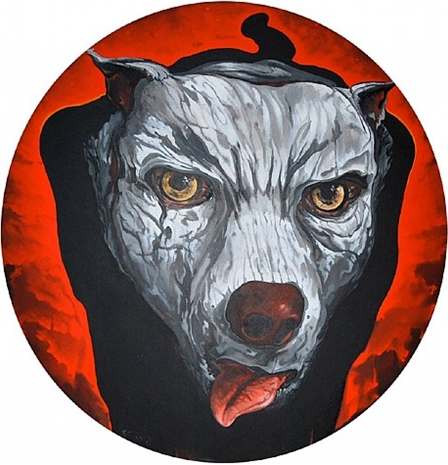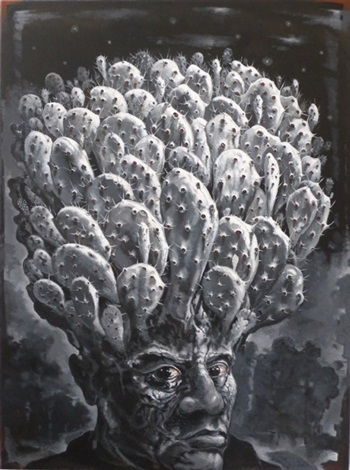Art & Exhibitions
artnet Asks: Jose Garcia Cordero and Caribbean Nights
The artist reflects on his current Lower East Side show.

The artist reflects on his current Lower East Side show.

Artnet Galleries Team

For Dominican artist José García Cordero, his work is a means to “reflect and deny what has been said,” commenting on the cruelty, perversion, and greed that permeates society. Intermixed with the influence of his Caribbean roots and time spent in Paris, his oeuvre presents a contemporary spread of paintings that reflect the duality of his life, and the mixed emotions that often accompanied it. 13 of these paintings—the majority of which have never been displayed before—are currently on view at the Lyle O. Reitzel Gallery in New York in an exhibition titled “José García Cordero: Tales from the Caribbean Nights” which runs until July 30. We recently sat down with the artist to hear his thoughts on everything from his gallery show to his dream dinner date:
Tell us about your current show “Tales of Caribbean Nights” at the Lyle O. Reitzel Gallery. Do you have a vision for the future? What new material are you currently working on?
I consider my present my future. What is new is not yet physical. It’s an incomprehensible passing breeze. Caribbean nights are very few. All are legends and lies. But the lie is true and we are all fascinated by its possibility.
Describe the role of dark, vivid imagery in your work. How does this connect with Dominican folklore from your childhood?
The superstitious stories of the poor are illustrated by these metaphors, impregnated by Spanish medieval heritage. Simultaneously miserable and beautiful, I try to make use of them with method.
In what way did exile change your outlook on the world around you?
Exile is a distancing. Everything is seen from another side and the world becomes wide and strange. Deprived of a homeland, one must appropriate to the territory of another.
They say “you may leave Paris, but Paris never truly leaves you.” How has Parisian life changed you?
Paris is a democratic space. Cultured. Political. Romantic. Its history inhabits it. One lives on that alone.

José García Cordero, Perro Rojo (2010). Courtesy of the Lyle O. Reitzel Gallery.
How, and to what extent, do you feel European and Caribbean cultures have influenced your work?
My homeland expresses herself in the Spanish tongue. Her music is just as classical as it is pop. I completed my studies in the Montessori Method and Jesuit sect and was later influenced by the old European philosophers. However, the carnival was my ultimate joy. It nourished the Caribbean superstitions of the dominant religion.
Who, artist or otherwise, do you admire?
I admired the lucid clairvoyants who in the end make me laugh like Cindy Sherman.
What has been the greatest challenge you’ve faced so far?
Saving myself from unproductive boredom. Contemplating on the world’s disasters, I try to depict images that provoke absurdity to liberate my audience from rational analysis. This is an on-going challenge.
Do you ever experience artist’s block? What do you do to overcome it?
I escape to the forest and cure myself.
If you could have dinner with one person, alive or dead, who would you chose?
Charles Chaplin.

José García Cordero, El Orgullo (2016). Courtesy of the Lyle O. Reitzel Gallery.